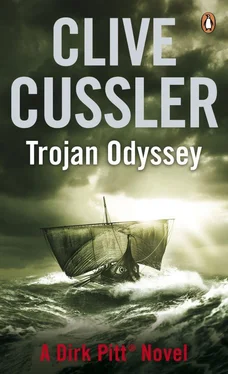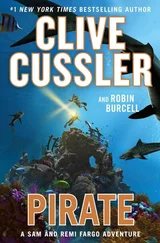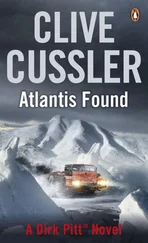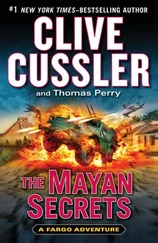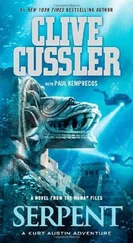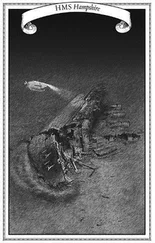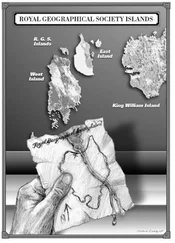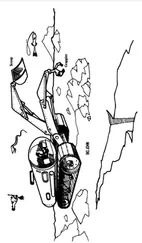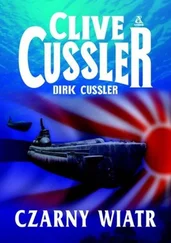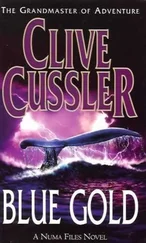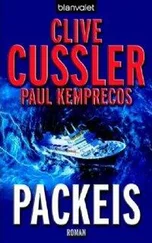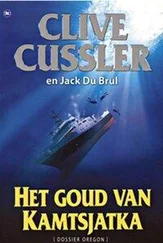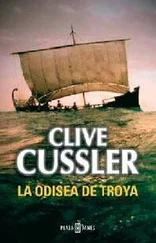At first, the marine archaeologists who examined the rooms of stone were not even certain the structures were man-made. Nor did the area produce an abundance of artifacts. Except for the contents of the stone bed and the cauldron, the only others found came from the kitchen. But as the investigation continued, more and more incredible archaeological treasures were recorded. One revelation that the geologists on the team discovered was that the structure once sat in the open above a small hill. This came to light when the encrustation on one six-inch-square piece of wall in the bedroom was delicately brushed away and it became obvious the rooms were not carved from the rock but constructed of stone fitted on stone when Navidad Bank was an island rising above the water.
Dirk stood in the laboratory with his sister at his side, examining the artifacts that had been carefully transported to the ship's laboratory and immersed in trays of seawater in preparation for the lengthy conservation process. He very gently held up an exquisite gold torque, the neck chain that had been found on the stone bed.
"Every relic we've removed from the bed and the cauldron has belonged to a woman."
"It's even more intricate than much of the jewelry produced today," said Summer, admiring the chain as the gold reflected the sun coming through the ship's ports.
"Until I can make a comparison with archaeological records in European archives, I'd have to date it as Middle Bronze Age." The voice was soft and punctuated, like a mild summer shower on a metal roof. It belonged to Dr. Jeffrey Parks, who carried himself like a wary wolf, with his face low and thrust out. He was six feet eight inches in height and constantly bent over from the stratosphere. A collegiate all-star basketball player, he was sidelined because of a serious knee injury and never played again. Instead, he studied marine archaeology, eventually gaining a doctorate with his thesis on ancient underwater cities. He had been invited on the expedition by Admiral Sandecker because of his specialized expertise.
Parks walked past the long table fitted with open tanks that held the ancient relics and stopped at a large board mounted on a bulkhead that displayed more than fifty photos taken of the interior of the underwater edifice. He paused and with the eraser end of a pencil tapped a montage of photos showing the floor plan. "What we have is not a city or a fortress. No structures that extend beyond the rooms of your original discovery are apparent. Call it a mansion for its time or a small palace that became the tomb of an elite woman. Perhaps a queen or a high priestess who was rich enough to commission her own jewelry."
"Pity there is nothing left of her," said Summer. "Not even an indication of her skull. Even her teeth are gone."
Parks gave a slight twist of his mouth. "Her bones disappeared centuries ago, along with all her garments, soon after the structure was inundated by the sea." He moved to a large photograph taken before the artifacts were removed from the stone bed and tapped the pencil again on a close-up picture of the bronze body armor. "She must have been a warrior who led men into battle. The cuirass in the photo looks made of one piece and had to be put on over the head like a metal sweater."
Summer tried to imagine how the cuirass would fit on her. She had read that the Celts were large people for their time, but the armor looked far too small for her torso. "How in the world did she come to be here?"
"I haven't a clue," said Parks. "As a traditional archaeologist who isn't supposed to believe in diffusion, the contact between the Americas and other parts of the world before Columbus, I'm required to say that this is an elaborate hoax perpetrated by the Spanish sometime after fifteen hundred."
Summer frowned. "You can't really believe that?"
Parks gave a tiny smile. "Not really. Not after what we've seen here. But until we can prove without doubt how these artifacts came to be on Navidad Bank, the controversy will shake the world of ancient history."
Summer made her case. "But it was possible for ancient seafarers to cross the sea."
"No one says it was impossible. People have crossed the Atlantic and Pacific in everything from boats made out of cowhides to six-foot sailboats. It's entirely conceivable that fishermen from Japan or Ireland were blown by storms to the Americas. Archaeologists admit there are many curious bits and pieces of evidence that suggest European and Asian influence throughout Central and South American art and architecture. But no legitimate object from this side of the pond has been found over there."
"Our father found proof of the Vikings' presence in the United States," argued Summer.
"And he and Al Giordino discovered artifacts from the Alexandria Library in Texas," added Dirk.
Parks shrugged. "The fact still remains that artifacts proven to have come from the Americas have yet to turn up from excavations in Europe or Africa."
"Ah," said Summer, shooting her arrow, "what about the traces of nicotine and cocaine that have been found in Egyptian mummies? Tobacco and cocoa leaves came only from the Americas."
"I thought you'd bring that up," Parks said, with a sigh. "Egyptologists are still fighting over that one."
Summer frowned thoughtfully. "Could the answers still be down in the rooms?"
"Maybe," Parks admitted. "Our marine biologists are running tests on the encrustation found on the walls, while our phytochemist examines studies about the remains of plant life in an effort to determine a time line for how long the building was covered by the sea."
Summer looked lost in thought. "Could there be any inscriptions under the encrustation, something the archaeologists might have missed?"
Parks laughed. "The early Celts left behind no art or written records depicting their culture. Finding carved inscriptions would be implausible, unless, of course, we're wrong in our dating of Navinia."
"Navinia?"
Parks stared at a computer printout of the architecture of the sunken structure as it might have looked when built. "It's as good a name as any, don't you think?"
"As good as any," Dirk echoed. He looked at Summer. "Why don't you and I dive first thing tomorrow morning and search the walls for inscriptions? Besides, I think it only fitting that we pay our respects to our high priestess for the last time."
"Don't linger too long," said Parks. "The captain has given notice that the anchors come up at noon. He wants to transport the artifacts to Fort Lauderdale as soon as possible."
As they exited the laboratory, Summer looked at Dirk with a curious gleam in her eye. "Since when are you overcome with nostalgia?"
"There is a practical method to my madness."
"Oh, and what is that?" she asked dryly.
He stared back at her with a crooked little grin. "I have an idea something important was missed."
Now that they knew where to continue the search, they swam straight to the anteroom. The ancient compartments were empty now. Only yesterday it had looked like an airport waiting room. The ship's scientists were probing every nook and cranny. Now, with all the artifacts removed and under preservation aboard Sea Yesteryear, and their investigation all but finished, they were back on board, compiling and evaluating their findings. Dirk and Summer had the submerged rooms all to themselves. Now that there were no archaeologists looking over their shoulders, they saw little reason to treat the walls with gloves of velvet.
As planned, they began their search in the entry chamber, Summer examining one wall while Dirk took the other, scraping away any sea growth or encrustation with putty knives until they reached bare stone, knowing they were committing sacrilege in the eyes of a conscientious archaeologist. They worked the walls, scraping in long horizontal bands, concentrating from four to five feet from the floor. Because the average height of people three thousand years ago was several inches shorter than in the present, their eye level would have been lower. Using this historical fact, Dirk and Summer decided to compress their search area.
Читать дальше
